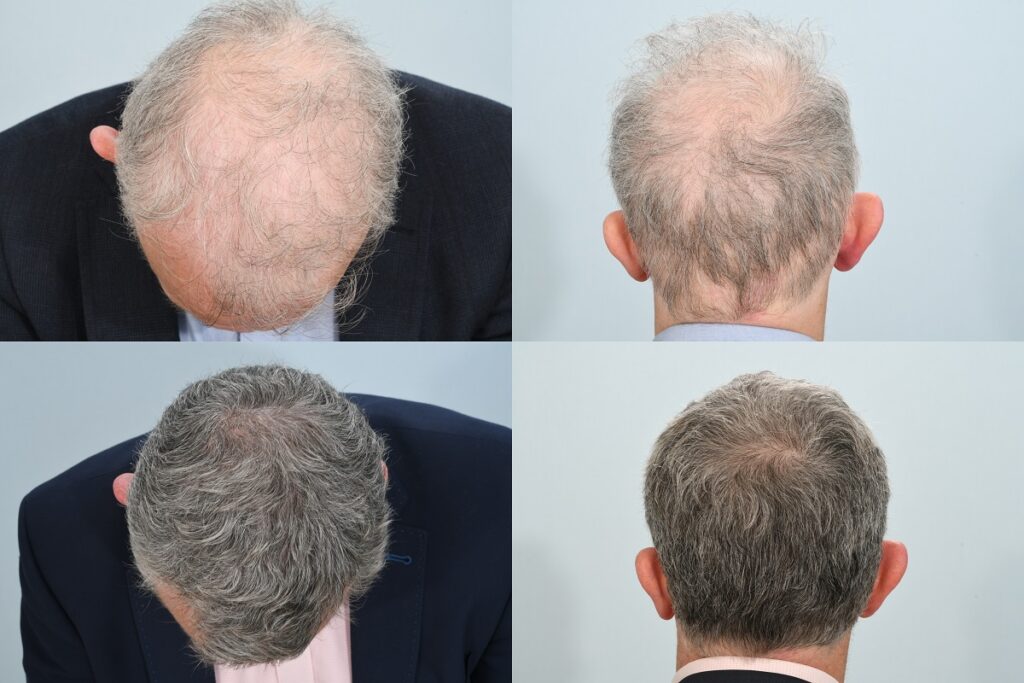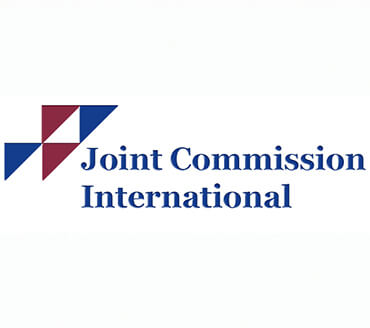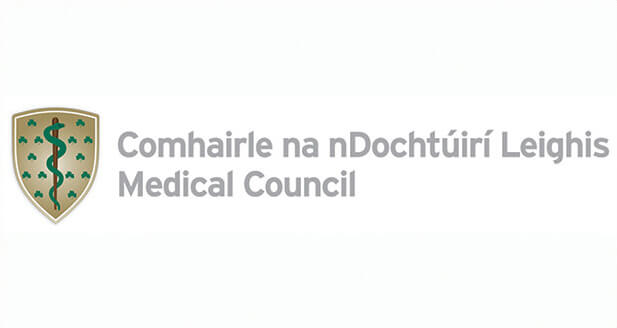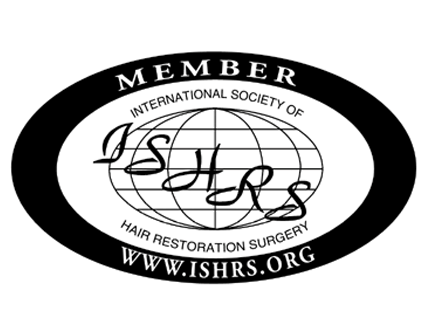Our consultant Dermatologist treats many different conditions of the hair and scalp that can cause hair loss. The dermatologist usually approaches hair loss from the medical perspective as opposed to surgically.
Some of the more commonly treated conditions include;
Alopecia Areata
Alopecia areata is an autoimmune disease where the immune system incorrectly targets the hair follicles. Most people suffering from alopecia areata will notice coin shaped areas of hair loss. For some the condition can progress to alopecia totalis where there is a loss of all of the hair on the scalp or alopecia universalis where all body hair is also lost.
Alopecia areata is a form of hair loss that should be treated by a dermatologist. Treatment options depend on the extent of scalp involvement. Topical or injected steroid offer benefit for more limited cases, while more extensive involvement can require immunosuppressive therapy.
Usually, hair transplantation is not a treatment option for those suffering from alopecia areata as the immune system attacks the transplanted hair in the same way.
Alopecia areata presents as a single patch of hair loss that usually resolves within 6 months, or multiple patches that resolve within 12 months in two-thirds of cases. Recurrent patches of hair loss or incidences of alopecia totalis or alopecia universalis account for the remaining third of cases.

Recent years have seen significant improvement in our understanding of how to treat alopecia areata. In 2022 the US FDA approved a drug for the systemic treatment of alopecia areata for the first time.
Much more work, however, is required to understand more about the condition’s causes, impact and the safety of the treatments we use. Dr. Wall and the team at HRBR have been involved in all aspects of this research through;
- Our work with The Charles Institute of Dermatology at UCD researching the triggers of alopecia areata.
- Pioneering the development and recruitment for a global registry (Global Registry of Alopecia Areata Disease Severity and Treatment Safety “GRASS”) that collects information regarding how alopecia areata affects patients, and how safe and effective new and existing therapies are. This registry has been developed by an Irish registry charity (National and International Skin Registry solutions; NISR. NISR Solutions Our Registries) and the Australasian Hair and Wool Research society Australasian Hair & Wool Research Society – The Australasian Hair and Wool Research Society aims to foster hair science through communication amongst Australian and New Zealand hair researchers, dermatologists and wool biologists. (ahwrs.org.au) and is collecting information from Australia, Ireland and Italy, with further countries preparing to contribute to the GRASS International network.
Further reading and publications by Dr. Wall in relation to alopecia areata can be found here;
paper-3-eDelphi-Alopecia-areata.pdf (aaaf.org.au);
Scarring Alopecia
Scarring alopecia, also called cicatricial alopecia, isn’t necessarily associated with visible scars on the scalp. Instead, the scarring is beneath the skin where the body’s immune cells replace hair follicles with scar tissue. The result is hair loss in discreet patches of the scalp.
There are a wide variety of conditions that can lead to this type of hair loss including: bacterial, fungal or viral infections.
These conditions should be seen by a dermatologist as a biopsy and immunoflourescence studies are necessary for a precise diagnosis. Following treatment of the primary cause of the hair loss, hair restoration surgery can be used in certain circumstances to restore the hair.
Frontal Fibrosing Alopecia
Frontal Fibrosing Alopecia is the name given to a type of scarring hair loss that generally affects the front of the scalp. It is a form of scarring alopecia which appears to be increasing in incidence.
Frontal Fibrosing Alopecia usually affects post-menopausal women over the age of 50. It is uncommon in younger women and in men.
The cause of Frontal Fibrosing Alopecia is currently unknown; genetic, hormonal and environmental factors may be involved.
Frontal Fibrosing Alopecia is characterised by a usually symmetrical bank of hair loss on the front and sides of the scalp and loss of eyebrows. This differs to patients suffering from female pattern hair loss where the hairline and eyebrows are usually maintained.
There is currently no cure for Frontal Fibrosing Alopecia. Oral steriods, anti-inflammatory anti-biotics or five alpha-reductase inhibitors can be used in certain circumstances.
Similar to other hair losses described on this page, hair transplant surgery is not usually a treatment option for Frontal Fibrosing Alopecia. We have however, in limited circumstances, in patients where the condition has “burnt out” been able to transplant these areas successfully.
Contact Us
To arrange an appointment at HRBR’s dermatology clinic to discuss your hair loss concerns or for any further information please contact us on +353 1 209 1000 or info@hrbr.ie.










